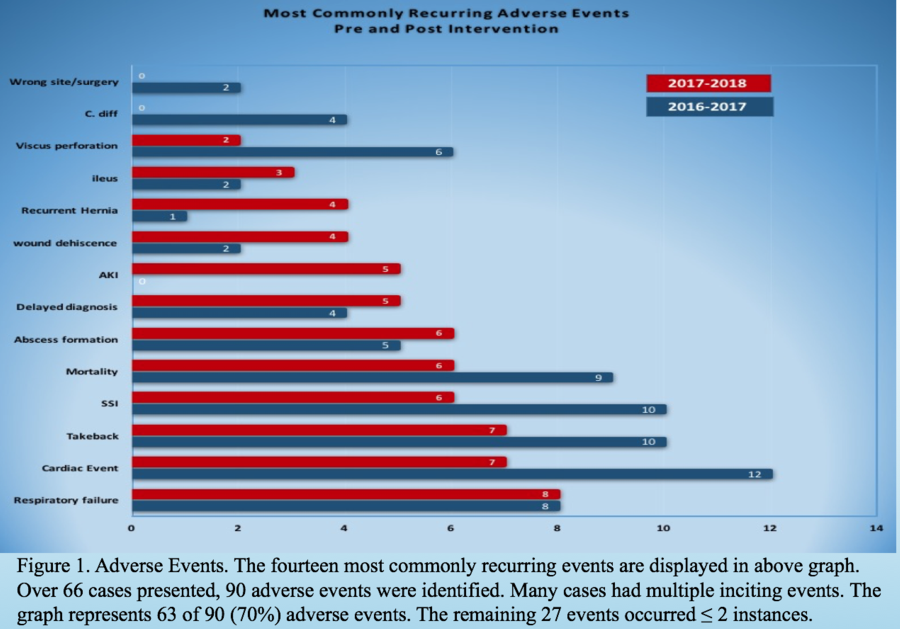Poster5-08: MORBIDITY AND MORTALITY CONFERENCE: IMPROVING SURGICAL EDUCATION
Thomas Kerestes, MD, Peter M DeVito, MD; Western Reserve Health Education/NEOMED
Purpose: Morbidity and Mortality conferences are an essential aspect of a surgery resident’s training. M&M conference promotes critical thinking amongst the residents, helps to identify opportunities for improved performance, enriches clinical knowledge, and potentially enhances clinical outcomes. Each week two cases are presented, a root cause diagram is included. The purpose of this project is to identify the most common recurring adverse outcomes and their root causes.
Method: Root cause data was collected from the 2016 and 2017 academic years. The intervention was the addition of a relevant UptoDate article for each case. This intervention was used throughout 2017. Adverse outcomes and root cause were identified. Causes divided into six areas of possible improvement (Individual, Environment, Team, Rules/Policy, Organization, Patient).
Results: 66 cases were presented; 90 adverse outcomes were identified. The most common event was respiratory failure(8,8.8%). No improvement from prior year. Second was cardiac complications(7,7.9%), decreased from 12 events, a 41.7% improvement.
Take-back procedure was the next most common (7,7.9%), decreased from 10, a 30% improvement. The remaining outcomes in descending order of occurrence were SSI (6.6%), Mortality(6.6%), Abscess(6.6%), delayed diagnosis(5.5%), AKI(5.5%), recurrent hernia(4.4%), wound dehiscence(4.4%), ileus(3.3%), viscus perforation(2.2%) The fourteen most common adverse occurrences comprise 63 of the total 90. The remaining 27 events occurred two or fewer instances. Root cause was divided into six factors. The majority of cases involved a Patient factor (75/137, 54.7%) followed by Team, Individual, Environment, Organization, and Rules/Policy [(36/137, 10/137, 8/137, 8/137, 0/137 total factors respectively)(26.3%, 7.3%, 5.8%, 5.8%, 0% respectively)]. The three most common factors were surgical technique, multiple comorbidities and patient non-compliance.
Conclusion: Many adverse outcomes are preventable. It appears that the majority of factors saw an improvement over the time frame discussed. 8 of the 14 adverse outcomes decreased with intervention. When looking at each year from a broad view, the post intervention group had a total of 11.7% decrease in total adverse events. I believe implementing the UptoDate article reviews with each M&M has made an improvement in surgical outcomes.

